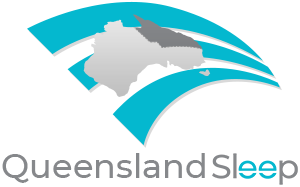by Dr Sadasivam Suresh.
In children Snoring and Obstructive Sleep Apnoea is an outstanding example of the seamless transition from normal phenomenon to an abnormal pathology. Snoring is noted in at least 15% of paediatric population at any one stage and is considered benign when it is not associated with any other sleep symptomatology. The main clinical presentation in OSA are: snoring, witnessed pauses, sleep disturbance and poor performance at school. Detailed sleep history supplemented by clinical examination and assessment of breathing during sleep will help in diagnosing OSA. Full polysomnography remains the gold standard for diagnosis, however overnight oximetry when performed and analyzed by experienced staff is a useful screening tool. The mainstay of treatment in children is adenotonsillectomy and the resolution rate is close to 90%. Treatment of underlying medical condition and control of weight gain contribute significantly in reducing the severity of OSA. Supportive therapy during sleep in the form of continuous positive airway pressure [CPAP] has been proven to be beneficial and well tolerated in children.
Complications of untreated OSA:
Over the last decade there has been increased understanding of the morbidity from untreated OSA, even when the OSA is in the mild to moderate category. Neurocognitive and learning deficits have been associated with OSA and early diagnosis and appropriate treatment appears to reverse some of the deficits. Also, it is postulated that older the child at the age of treatment the lesser the chance of reversing the deficits. Untreated OSA in adulthood is associated with increased cardiovascular, cerebrovascular morbidity and it is likely that some of the changes have their origins in childhood.
Summary:
- Snoring is very common symptom in childhood with 10-15% prevalence
- Obstructive sleep apnea occurs in 2-5% of children
- When recognized and treated early can have an impact on sleep quality, growth and neurocognitive development.

Lessons Learned from Sleep Education in Schools: A Review of Dos and Don’ts
Journal of Clinical Sleep Medicine by Dr Sarah Blunden who is a well know researcher in adolescent sleep problems.
There is strong evidence that sleep is important for children and young people. Insufficient or poor quality sleep has been associated with inattention, poorer memory, behavioural problems and poorer academic performance. Other problems such as anxiety, depression, stress, weight gain and obesity have also been seen in teens who are having inadequate sleep.
There is growing evidence than many children and a greater percentage of teenagers are not having sufficient sleep. With the increasing popularity of small screens and social media this is becoming a growing problem.
In this months Journal of Clinical Sleep Medicine, Dr Sarah Blunden from Central Queensland University, has published a meta-analysis of the 12 studies conducted in schools to educate and improve sleep habits in children and young people.
The conclusion is that we still have a lot to learn. Providing information alone is not enough. Programs will need to better engage parents and peers as children’s homes and friends play a big role in determining sleep habits.
Programs will need to include components designed to drive behavioural change as many teens lack motivation or self-efficacy to change their sleep habits. Although incorporation into the curriculum and engaging teachers is important, programs lead by non-teaching experts had greater appeal and impact on students.
Finally working with electronic devices may be necessary as bland didactic lectures did little to engage students.

National Sleep Foundation’s sleep time duration recommendations: methodology and results summary
Max Hirshkowitz,PhD, KaitlynWhiton,MHS , Steven M. Albert, PhD , Cathy Alessi,MD,
Oliviero Bruni, MD, Lydia DonCarlos, PhD, Nancy Hazen, PhD, John Herman, PhD, Eliot S. Katz, MD,Leila Kheirandish-Gozal, MD, MSc, David N. Neubauer, MD, Anne E. O’Donnell, MD,
Maurice Ohayon, MD, DSc, PhD, John Peever, PhD, Robert Rawding, PhD,Ramesh C. Sachdeva, MD, PhD, JD, Belinda Setters, MD, Michael V. Vitiello, PhD . Catesby Ware, PhD, Paula J. Adams Hillard, MD
OBJECTIVE: The objective was to conduct a scientifically rigorous update to the National Sleep Foundation’s sleep duration recommendations.
METHODS: The National Sleep Foundation convened an 18-member multidisciplinary expert panel, representing 12 stakeholder organizations, to evaluate scientific literature concerning sleep duration recommendations.We determined expert recommendations for sufficient sleep durations across the lifespanusing the RAND/UCLA Appropriateness Method.
RESULTS: The panel agreed that, for healthy individuals with normal sleep, the appropriate sleep duration fornewborns is between 14 and 17 hours, infants between 12 and 15 hours, toddlers between 11 and 14 hours, preschoolers between 10 and 13 hours, and school-aged children between 9 and 11 hours. For teenagers, 8 to 10 hours was considered appropriate, 7 to 9 hours for young adults and adults, and 7 to 8 hours of sleep for older adults.
CONCLUSIONS: Sufficient sleep duration requirements vary across the lifespan and from person to person. The recommendations reported here represent guidelines for healthy individuals and those not suffering from a sleep disorder. Sleep durations outside the recommended range may be appropriate, but deviating far from the normal range is rare. Individuals who habitually sleep outside the normal range may be exhibiting signs or symptoms of serious health problems or, if done volitionally, may be compromising their health and well-being.

Education in children’s sleep hygiene: which approaches are effective?
J Atten Disord. 2013 Oct;17(7):550-64. doi: 10.1177/1087054712457992. Epub 2012 Sep 13.
AIM: To analyze the interventions aimed at the practice of sleep hygiene, as well as their applicability and effectiveness in the clinical scenario, so that they may be used by pediatricians and family physicians for parental advice.
SOURCE OF DATA: A search of the PubMed database was performed using the following descriptors: sleep hygiene OR sleep education AND children or school-aged. In the LILACS and SciELO databases, the descriptors in Portuguese were: higiene E sono, educação E sono, educação E sono E crianças, e higiene E sono Einfância, with no limitations of the publication period.
SUMMARY: In total, ten articles were reviewed, in which the main objectives were to analyze the effectiveness of behavioral approaches and sleep hygiene techniques on children’s sleep quality and parents’ quality of life. The techniques used were one or more of the following: positive routines; controlled comforting and gradual extinction or sleep remodeling; as well as written diaries to monitor children’s sleep patterns. All of the approaches yielded positive results.
CONCLUSIONS: Although behavioral approaches to pediatric sleep hygiene are easy to apply and adhere to, there have been very few studies evaluating the effectiveness of the available techniques. This review demonstrated that these methods are effective in providing sleep hygiene for children, thus reflecting on parents’ improved quality of life. It is of utmost importance that pediatricians and family physicians are aware of such methods in order to adequately advise patients and their families.
Future research directions in sleep and ADHD: report of a consensus working group.
Owens J(1), Gruber R, Brown T, Corkum P, Cortese S, O’Brien L, Stein M, Weiss M.
Author information: (1)1George Washington School of Medicine and Health Sciences, Washington, DC,USA.
OBJECTIVE: To explore relationships between basic and translational science research regarding sleep and ADHD in children.
METHOD: A multidisciplinary group of experts in pediatric sleep medicine and ADHD convened in November 2010 to summarize the current literature, delineate knowledge gaps, and formulate recommendations regarding future research directions and priorities.
RESULTS: Six major research areas of interest were identified: (a) brain centers regulating sleep, arousal, and attention; (b) neurotransmitter systems involved in both sleep and attention regulation; (c) alterations of neural systems regulating sleep in ADHD; (d) phenotypic similarities between behavioral, mood, and cognitive manifestations of insufficient/disrupted sleep and ADHD; (e) hypoarousal and sleepiness in ADHD; and (f) external sleep-wake signals that affect sleep regulation in ADHD.
CONCLUSIONS: An enhanced understanding of the complex mechanisms regulating sleep
promotion, wakefulness, and attention may contribute to new insights regarding
the core impairments in ADHD and lead to the development of new therapies.





